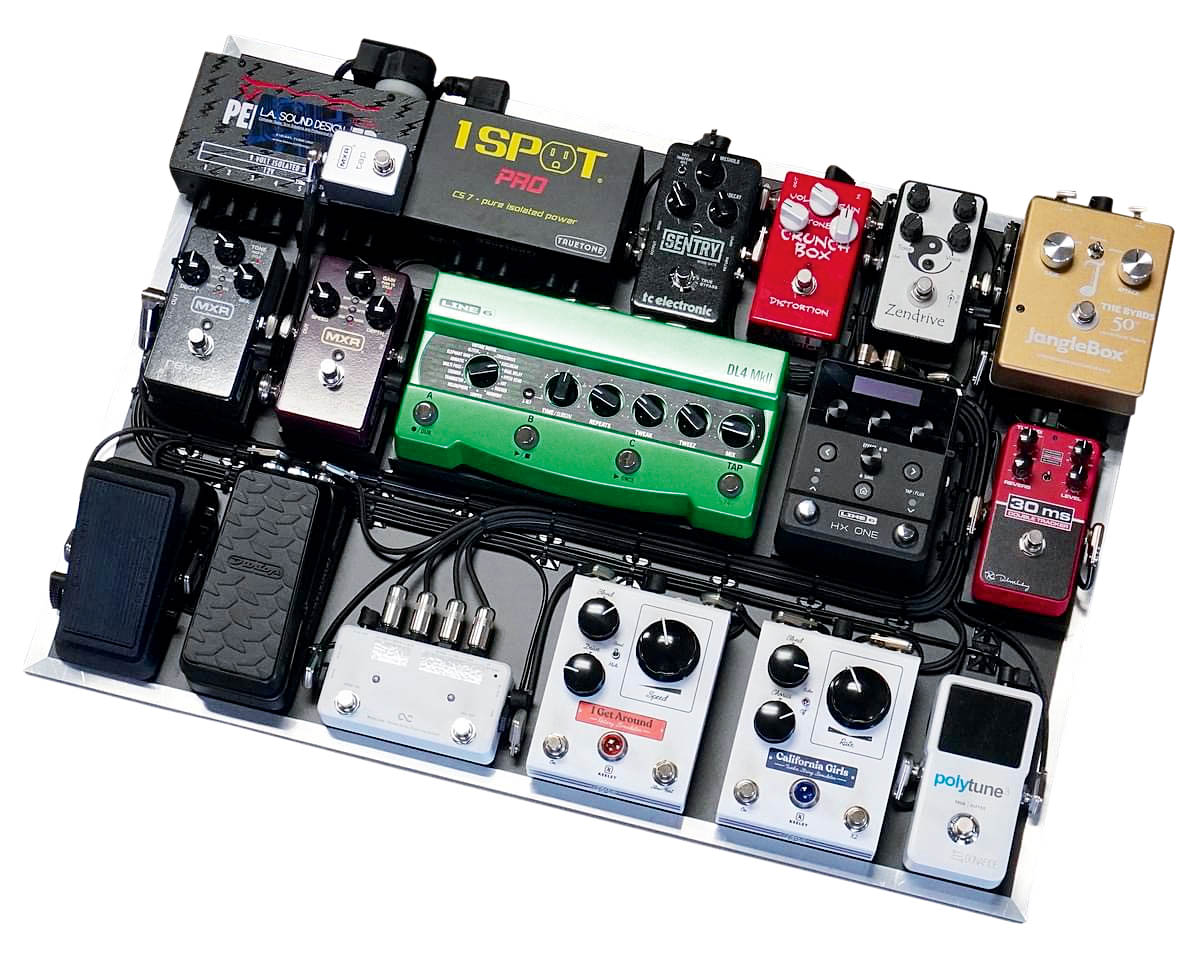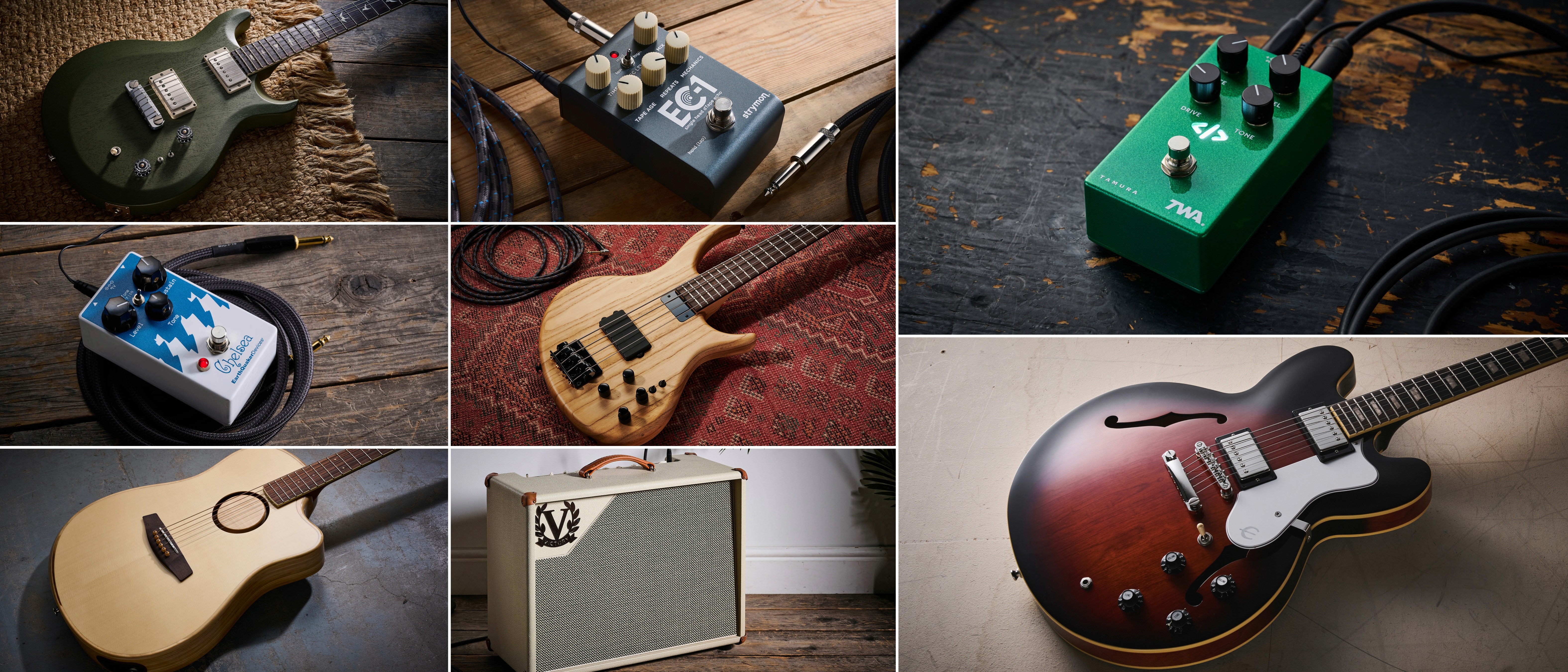“John Lennon hated doubling his vocals. The chief engineer at Abbey Road came up with a way to add a delay and put it onto another track. That’s what that pedal does”: The Cars’ Elliot Easton on the secrets of his pedalboard – and the wizard who made it
Easton has a Dumble-in-a-box, 12-string jangle on demand and a whole bunch of wildcards on a pedalboard that's got a little bit of everything

“I like to have a great all-around board that’ll give me the flavors of the different types of stuff I like to get into. I want to credit David Phillips at L.A. Sound Design; he builds pedalboards for everybody.
“I don’t want to name names, but while I was there, he had boards – I think – for Carl Verheyen and Larry Carlton. He builds these beautiful pedalboards that are very clean. He did mine, and I love it.
“It starts with a TC Electronic [Polytune 3]; next to that, I have two pedals by Keeley – the California Girls Twelve String Simulator and the I Get Around Rotary Simulator. I Get Around is kind of like a Leslie; California Girls is like a 12-string jangle box that I use for compression.
“Then I’ve got the Hermida Audio Zen Drive [overdrive]. It’s like a Dumble in a box. Then there’s a crunch pedal [Crunch Box] by a company from Australia called MI Audio, so there’s two pedals in one.
“Instead of stepping on one side for one part of the song and the other side for another part, I have a loop for these two, and I keep them out of the way at the top of the board. So what you see after the I Get Around is a loop that holds the Zen and MI Audio pedals.”

“Then I’ve got a Mini-Volume and a Mini-Wah, both by Dunlop. After that, I’ve got my Keeley 30ms [Automatic Double Tracker], which is a big part of what I do. The basis of that pedal is that John Lennon hated doubling his vocals. So the chief engineer at Abbey Road came up with a way to take his vocals, add slight delay, put it onto another track and, at various speeds, put the vocals together.
“That’s what the 30ms does; it’s like a doubler – but organic sounding. Then I’ve got my Line 6 HX One [multi-effects pedal], which is a little smaller and has all the original effects of the larger version. That’s followed by my Line 6 [DL4] MkII [Delay Modeler], my MXR Tremolo and my MXR Reverb. All of those are my wildcard pedals, where I can get all these crazy, beautiful sounds in modulation or when I’m looking for something unusual that I don’t normally choose.”
All the latest guitar news, interviews, lessons, reviews, deals and more, direct to your inbox!
“At the top of the board, I’ve got my compression and sustain pedal, the Janglebox [Classic]. Basically, it gives that shining Byrds sound. And there’s a button that puts it up another octave, giving extra shimmer and shine. I mentioned before why the overdrives are up there, and the board rounds out with my Truetone [1 Spot Pro] power supply and my Voodoo Lab [Pedal Power 2 Plus] power supply.”
If I had to choose one pedal for an entire show...
“If I had a small, clean Fender combo with headroom, I’d take the MI Audio Crunch Box. If I had a Marshall with its own power for distortion, I’d take the Line 6 DL4 Delay.”
- This article first appeared in Guitar World. Subscribe and save.
Andrew Daly is an iced-coffee-addicted, oddball Telecaster-playing, alfredo pasta-loving journalist from Long Island, NY, who, in addition to being a contributing writer for Guitar World, scribes for Bass Player, Guitar Player, Guitarist, and MusicRadar. Andrew has interviewed favorites like Ace Frehley, Johnny Marr, Vito Bratta, Bruce Kulick, Joe Perry, Brad Whitford, Tom Morello, Rich Robinson, and Paul Stanley, while his all-time favorite (rhythm player), Keith Richards, continues to elude him.
You must confirm your public display name before commenting
Please logout and then login again, you will then be prompted to enter your display name.


